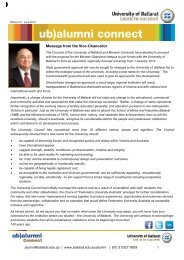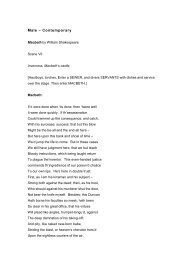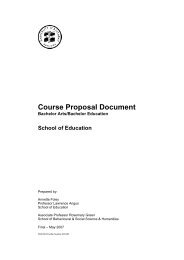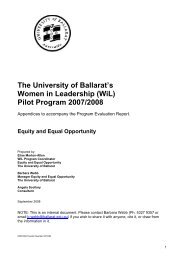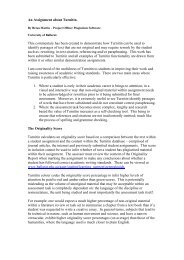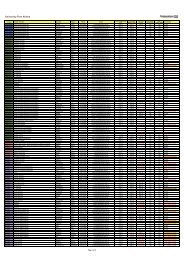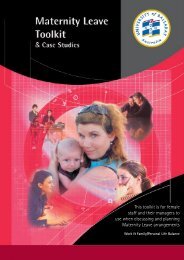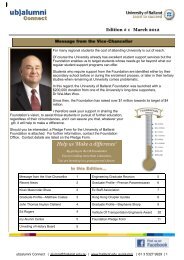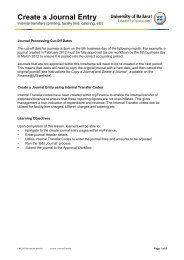Policy without (much) pain - University of Ballarat
Policy without (much) pain - University of Ballarat
Policy without (much) pain - University of Ballarat
- No tags were found...
Create successful ePaper yourself
Turn your PDF publications into a flip-book with our unique Google optimized e-Paper software.
<strong>Policy</strong> <strong>without</strong> (<strong>much</strong>) <strong>pain</strong>23. The ‘policy industry’It is our experience from discussion in many pr<strong>of</strong>essional development workshops on policydevelopment that staff <strong>of</strong> tertiary institutions have mixed feelings about policy. Academic staffmay associate it with burgeoning managerialism and excessive regulation. Many pr<strong>of</strong>essionalstaff, particularly in academic units, are likely to question whether quite so many policies andprocedures are needed. Is there a policy industry? Are policy managers (and quality assurancemanagers) making a comfortable niche for themselves, like spiders spinning endless webs <strong>of</strong> redtape?Effective policy development is the best way to counteract distrust <strong>of</strong> policy. The first essential isgood consultation to ensure policy meets the needs <strong>of</strong> the institution. <strong>Policy</strong> managers and policydevelopers should be the first to ask questions such as ‘Is such a policy needed?’ and ‘Will thispolicy option be too resource-intensive?’ Alongside staff distrust <strong>of</strong> policy is a craving forconsistent, sensible policy to provide clear answers and a basis on which to defend decisions. Ifwe can satisfy this need, policy will be perceived as helpful rather than hindering.There is a policy industry in the sense that, over the past 15 years, most Australasian tertiaryinstitutions have set up policy frameworks. In Victoria, for example, Deakin <strong>University</strong> andSwinburne <strong>University</strong> <strong>of</strong> Technology were the first to do this, from the late 1990s. In the newmillennium, the other Victorian universities have run similar projects. A survey <strong>of</strong> Australasianinstitutions’ websites in 2010 shows that a large number have such projects under way or recentlycompleted. Some are undertaking second phase projects to improve and consolidate their policyframework. Why all this activity?In Australia, the merging <strong>of</strong> institutions during the Dawkins reforms <strong>of</strong> the late 1980s led to a needfor institution-wide policies to bring about consistency. Where two or three institutions hadmerged, each bringing different practices, policy was seen as a way to achieve homogeneity.From the 1990s, the introduction <strong>of</strong> external audits <strong>of</strong> tertiary institutions has produced rafts <strong>of</strong>recommendations for improvement. These typically include recommendations that institutionsdevelop or improve specific policies. The Australian Universities Quality Agency website featuresa best practice repository, and many <strong>of</strong> the examples in the repository are institutional policies~ 46 ~



